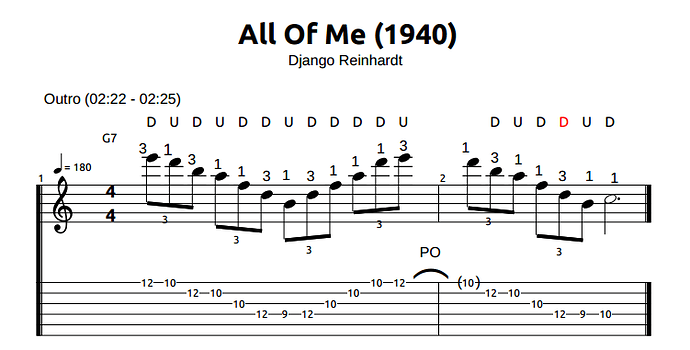Hi all.
I’ve been transcribing and playing Django tunes for years. There’s a little triplet phrase from the outro of his 1940 recording “All of Me” which has intrigued me (attached).
I’ve transcribed and played it using the rules of traditional “Gypsy picking” - ie.
“When changing strings (up or down) thou shalt always start with a downstroke (or if moving to a higher string, a rest stroke or downward sweep is OK too ); but never start on an upstroke or use upwards sweeps.”
(Oh yeah, and right handed tapping is definitely not allowed - sorry Eddie !!)
This means that the second bar would involve two “double downs” when moving to lower strings (marked in red on my transcription), which are hard to play at speed.
I believe Django followed the rules of “Gypsy picking” nearly all the time; and I
know he was phenomenally fast with this technique, but even so it’s hard to see how he managed to play this phrase with such speed and yet still maintained such good pick attack and clear articulation.
The only place where the attack sounds weak is on the first note of the second bar: maybe Django does a sneaky pull-off here instead of a downward pick stroke ?
I was wondering if any folks on the forum know or can suggest a better way of playing this phrase which is still true to the 1930s Gypsy technique …maybe Joscho Stephan might know - If you’re reading this Joscho, many thanks for your great lesson on Cracking the Code !..
Thanks in anticipation
Best wishes





